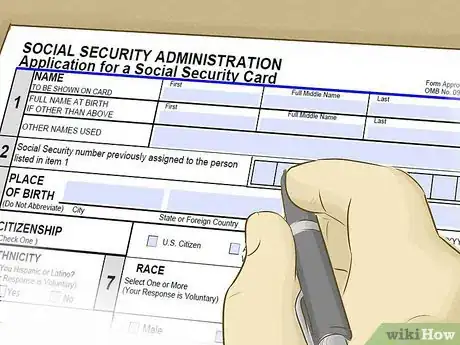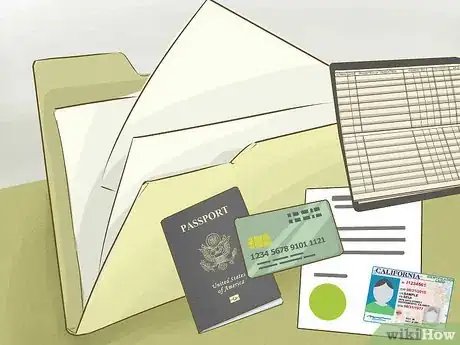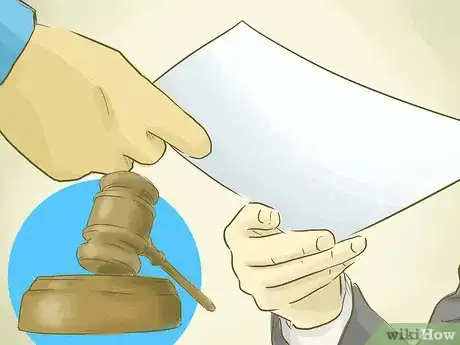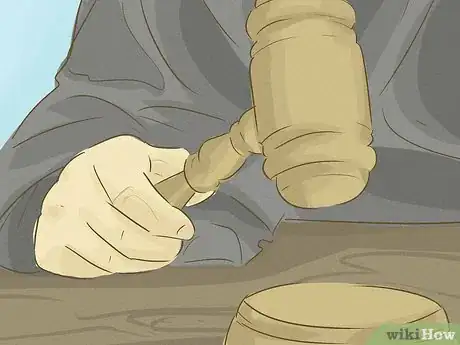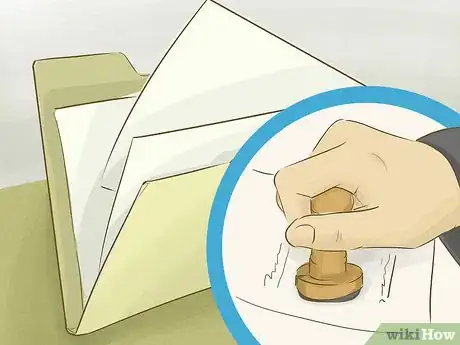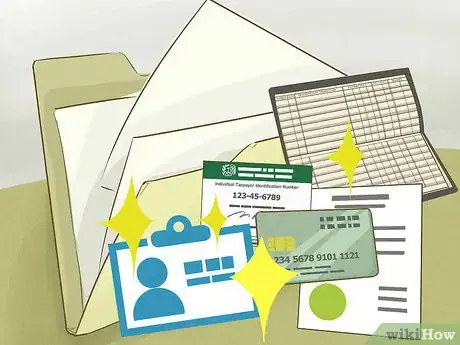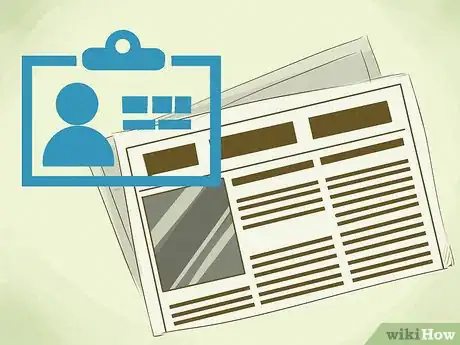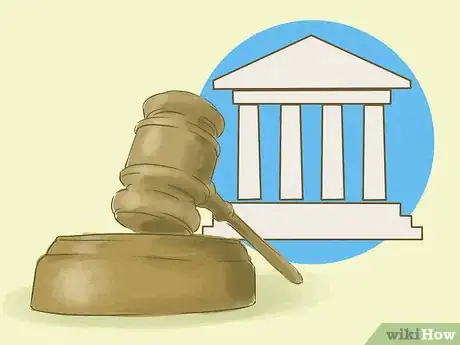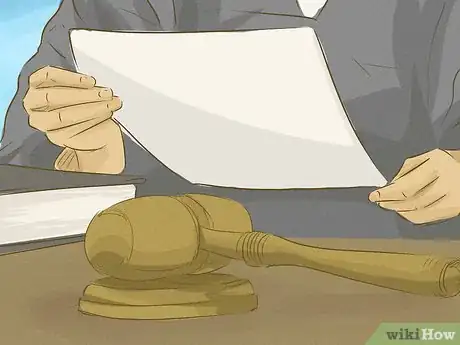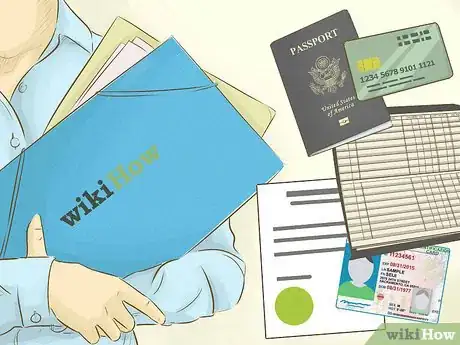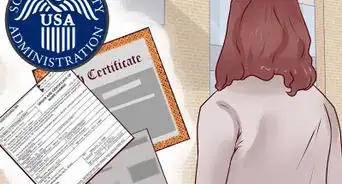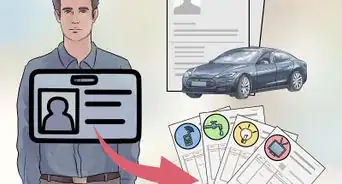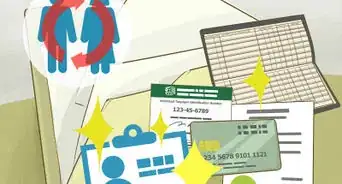This article was written by Jennifer Mueller, JD. Jennifer Mueller is an in-house legal expert at wikiHow. Jennifer reviews, fact-checks, and evaluates wikiHow's legal content to ensure thoroughness and accuracy. She received her JD from Indiana University Maurer School of Law in 2006.
There are 11 references cited in this article, which can be found at the bottom of the page.
This article has been viewed 257,048 times.
If you changed your name after you got married, you may want to change it back to your birth name or another previous name when you get divorced. All states allow you to accomplish this during the divorce process, provided you're returning to a name you used legally in the past. If you don't decide you want to change your name until the divorce is finalized, you can still accomplish the same result, although you may have to jump through a few more legal hoops to do so. Regardless of the method you use, make sure you use the same name consistently on all identification and financial accounts to avoid confusion.[1]
Steps
Including Name Change in Your Divorce
-
1Indicate in your divorce petition that you want to return to a previous name. If you're the one filing for divorce, simply include a clause in your petition that you wish to return to your previous name.[2]
- If your spouse files for divorce, you can file an answer or counterclaim asking to have that clause added to the final decree.[3]
-
2Testify at the hearing that you want to return to a previous name. At the divorce hearing, the judge will question you about your name change. You'll have to state under oath that you are not changing your name for an improper purpose such as to avoid criminal prosecution.[4]Advertisement
-
3Get certified copies of your divorce decree. When the judge signs your decree, get certified copies from the clerk's office so you can show them anywhere you need to get your name changed.[5]
-
4Take your divorce decree to your nearest Social Security office. Complete the application to get a new Social Security card and take it to the local Social Security office along with a certified copy of your divorce decree.
- If your marriage was more than two years ago, you'll also need to bring an identity document such as an old driver's license as proof that you previously used the name you want to use now.
- There is no charge to change your name on your Social Security card. Your new card will be mailed to you once your application is received and processed.[6]
-
5Get your name changed on your driver's license. Take your old driver's license and a certified copy of your divorce decree to get a driver's license with your new name.
- Check the rules in your state concerning other documents you may need to verify the change. Some to most may require your new social security card in addition to the decree. Make note and prepare beforehand to avoid multiple trips.
- Depending on your state, you may be charged a fee to receive a new driver's license.[7]
-
6Use your Social Security card and your driver's license to get your name changed everywhere else. Once your photo ID and Social Security reflect your new name, you should have no trouble getting it changed elsewhere.
- Update the post office, credit card companies, and banks as quickly as possible. This is to avoid any returned payments or refused charges.[8] Notify the post office as soon as you can after receiving the decree so mail in your new name can successfully be routed to your address. This is heavily important concerning the social security card; if the mail gets bounced back to them, the SSA will need to destroy the card and the process will need to be redone.
- Remember to notify the IRS and your work company for tax and payroll reasons.
Amending Your Divorce Decree
-
1Review your divorce decree to make sure there's no language permitting you to return to a former name. Before you go any further, look back over your divorce decree and make sure the notion of you returning to a previously used name was never mentioned.[9]
- Many divorce forms, for example, include this clause by default. You could have checked it off and simply forgotten about it.
-
2File a motion. In many jurisdictions, you can file a post-judgment motion or an ex parte application to return to a former name even after your divorce has been finalized.
- For example, if you live in California, you can file an Ex Parte Application for Restoration of Former Name After Entry of Judgment,[10] available as form FL-395.[11]
- In New Jersey, you can file a post judgment motion with a nominal fee requesting the court grant you permission to return to your maiden name.[12]
- Make a call to the clerk's office of the court where your divorce was finalized and see if this is a possibility. There also may be a form available, either at the clerk's office or online, that you can use to draft your motion.
- The motion will need to be filed in the same court that heard your divorce, and will have the same case number as your divorce did.[13]
- You also must attach a copy of your final divorce decree to your motion.[14]
-
3Attend a hearing, if necessary. Some courts require you to appear for a hearing before granting your motion to change your name. You'll be asked to confirm under oath that you're not seeking to change your name for an improper purpose such as to avoid paying child support.[15]
-
4Get certified copies of the judge's order. Once the judge signs the order granting your motion, get certified copies from the clerk's office.[16]
-
5Take the judge's order to the Social Security office. You'll need a completed application for a new Social Security card and a certified copy of the judge's order to have your name changed on your Social Security card.
- If you changed your name more than two years ago, you'll also need to bring an identity document such as an old driver's license that provides proof that you used the previous name you want to use now.
- Your new card will be mailed to you when the information is received and processed. You won't have to pay a fee, but you will have to appear in person at your nearest Social Security office.[17]
-
6Get your name changed on your driver's license. Appear in person at your nearest DMV with the judge's order and your old driver's license to get your name changed on your driver's license.
- Check your local rules before you go to make sure you don't need to bring anything else.
- You probably will be charged a fee to be issued a new driver's license.[18]
-
7Use your driver's license and your Social Security card to get your name changed on everything else. Your new photo ID should be enough for anyone else to change your name on your record with them, although in some situations you might need to show your Social Security card as well.
- Update the post office, credit card companies, and banks as quickly as possible. This is to avoid any returned payments or refused charges.[19] Notify the post office as soon as you can after receiving the decree so mail in your new name can successfully be routed to your address. This is heavily important concerning the social security card; if the mail gets bounced back to them, the SSA will need to destroy the card and the process will need to be redone.
- Remember to notify the IRS and your work company for tax and payroll reasons.
Filing a Name Change Petition
-
1Find the appropriate forms. Most courts will have a packet of prepared forms you can use to file a name change petition – you simply have to fill in the blanks to customize them to meet your needs.[20]
-
2Complete any required background checks. Some jurisdictions require fingerprints, criminal background checks, or other screenings before a judge will grant your petition for a name change.[21]
-
3File your forms at the clerk's office. Once you've completed the forms and all other requirements, file them at the clerk's office of the civil court in your county.[22]
- Be prepared to pay a filing fee for your name change petition. The fee varies among jurisdictions, but may be as much as several hundred dollars. For example, in California the filing fee for a petition for a decree of change of name or gender is $435.[23]
-
4Publish notice. Many jurisdictions require you to publish a small legal notice in the newspaper of record for a period of time.
- This notice alerts the public to your request for a name change and gives anyone who believes the court should refuse your request the opportunity to appear at your hearing and protest on the record.[24]
-
5Attend your hearing. Nearly every jurisdiction requires you to appear before a judge in person to have your petition granted.
- The judge will ask you questions about your name change under oath to make sure that you are not seeking a name change for an improper reason.[25]
-
6Get certified copies of the judge's order. When the judge grants your request for a name change, make sure you get certified copies of the order from the clerk.[26]
-
7Show the judge's order to get your name changed with Social Security. The judge's order along with a completed application for a new Social Security card should be all you need to get your name changed with Social Security.
- If you changed your name more than two years ago, you'll also need to show an identity document such as an old driver's license that has the name you want to use.
- Your new card will be mailed to you as soon as your application is processed, and you won't be charged a fee.[27]
-
8Get your name changed on your driver's license. You can take your old driver's license along with a certified copy of the judge's order to get your name changed on your driver's license.
- You'll have to appear in person at a local division of motor vehicles office, and you'll have to pay a fee for a new license.
- Check your state and county's rules before you go to make sure you don't need to bring any additional proof of identity or residency.[28]
-
9Show your driver's license and Social Security card to get your name changed on other accounts. Use your new photo ID to get your name changed on other accounts and records.
- Update the post office, credit card companies, and banks as quickly as possible. This is to avoid any returned payments or refused charges.[29] Notify the post office as soon as you can after receiving the decree so mail in your new name can successfully be routed to your address. This is heavily important concerning the social security card; if the mail gets bounced back to them, the SSA will need to destroy the card and the process will need to be redone.
- Remember to notify the IRS and your work company for tax and payroll reasons.
References
- ↑ http://www.nolo.com/legal-encyclopedia/change-name-after-divorce-faq-29090.html
- ↑ http://family.findlaw.com/divorce/changing-your-name-after-divorce.html
- ↑ http://www.divorcenet.com/states/new_jersey/njfaq14?_ga=1.194301357.148428651.1430874678
- ↑ http://www.charlestonlaw.net/name-change-south-carolina/
- ↑ http://www.nolo.com/legal-encyclopedia/change-name-after-divorce-faq-29090.html
- ↑ http://www.socialsecurity.gov/ssnumber/ss5doc.htm
- ↑ http://www.divorcenet.com/resources/divorce/implementing-your-name-change.htm
- ↑ http://www.divorcenet.com/resources/divorce/implementing-your-name-change.htm
- ↑ http://family.findlaw.com/divorce/changing-your-name-after-divorce.html
- ↑ http://family.findlaw.com/divorce/changing-your-name-after-divorce.html
- ↑ http://www.courts.ca.gov/documents/fl395.pdf
- ↑ http://www.divorcenet.com/states/new_jersey/njfaq14?_ga=1.194301357.148428651.1430874678
- ↑ http://family.findlaw.com/divorce/changing-your-name-after-divorce.html
- ↑ http://www.courts.ca.gov/22491.htm
- ↑ http://www.divorcenet.com/states/new_jersey/njfaq14?_ga=1.194301357.148428651.1430874678
- ↑ http://family.findlaw.com/divorce/changing-your-name-after-divorce.html
- ↑ http://www.socialsecurity.gov/ssnumber/ss5doc.htm
- ↑ http://www.divorcenet.com/resources/divorce/implementing-your-name-change.htm
- ↑ http://www.divorcenet.com/resources/divorce/implementing-your-name-change.htm
- ↑ http://www.courts.ca.gov/22489.htm
- ↑ http://www.charlestonlaw.net/name-change-south-carolina/
- ↑ http://www.courts.ca.gov/22489.htm
- ↑ http://www.courts.ca.gov/documents/filingfees.pdf
- ↑ http://www.courts.ca.gov/22489.htm
- ↑ http://www.courts.ca.gov/22489.htm
- ↑ http://www.courts.ca.gov/22489.htm
- ↑ http://www.socialsecurity.gov/ssnumber/ss5doc.htm
- ↑ http://www.divorcenet.com/resources/divorce/implementing-your-name-change.htm
- ↑ http://www.divorcenet.com/resources/divorce/implementing-your-name-change.htm
- ↑ http://www.divorcenet.com/resources/divorce/changing-your-name-the-basics.htm
About This Article
To take back a maiden name after divorce, start by indicating in your divorce petition that you want to return to a previous name. Next, at the divorce hearing, state under oath that you are not changing your name for an improper purpose. Then, get a certified copy of the divorce decree as you’ll need this paperwork to change your name with the social security office and driver’s license bureau. Once you have your social security card and driver’s license corrected, use these items to update your name with the post office, credit card companies, and banks. To learn how to file a motion to change back to your maiden name after your divorce has been finalized, keep reading!



